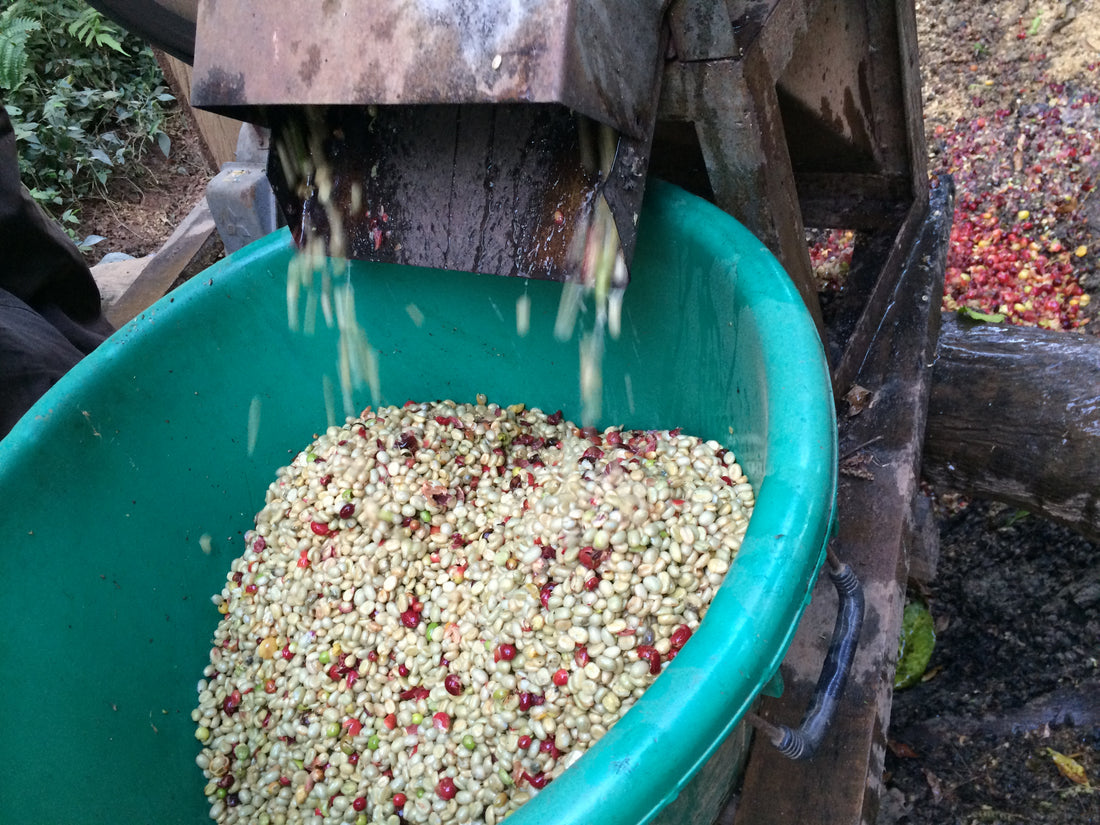Coffee, the beloved elixir that fuels our mornings and sparks creativity, undergoes a meticulous journey before it graces our mugs. From the moment it is plucked from the trees to the precise techniques used to process the beans, coffee processing methods play a crucial role in shaping the flavours and aromas we adore. Let's embark on a flavourful exploration of the diverse processing methods employed by coffee producers worldwide. From traditional methods like washed and natural processing to newer innovative techniques like honey and anaerobic fermentation, we delve into the details to unravel the secrets behind each cup of liquid gold.
Washed Process
The washed processing method, also known as the wet or fully washed method, is the most common and traditional approach employed by coffee farmers. This method emphasises cleanliness and consistency, resulting in a cup characterised by clarity and brightness.
The process begins with the careful selection of ripe coffee cherries. After harvest, the cherries are submerged in water to remove any impurities and excess pulp. This is followed by de-pulping, where the outer skin is removed, leaving behind the mucilage-covered beans. Fermentation then takes place, with the beans soaked in water tanks for a designated period. This fermentation helps break down the remaining mucilage, promoting the development of clean flavours. Finally, the beans are thoroughly washed and dried either in the sun or using mechanical dryers.
The washed method is preferred for its ability to produce coffees with distinct acidity, floral notes, and a vibrant, clean taste. Countries like Colombia and Costa Rica are renowned for their washed coffees, showcasing the method's consistent quality and flavour profiles.
Natural Process
Contrasting the washed method, the natural processing method embraces the power of the sun to create an entirely different flavour experience. This method is often associated with rich, full-bodied coffees with pronounced sweetness and intense fruitiness.
When employing the natural method, coffee cherries are carefully handpicked when fully ripe. Instead of de-pulping, the cherries are laid out on drying beds or patios, allowing them to dry naturally in the sun. During this process, the cherries ferment, and the sugars within seep into the beans, imparting the coffee with unique fruit flavours. Regular turning and meticulous monitoring of moisture levels are essential to prevent mould or fermentation defects.
The natural method is favoured in regions with dry climates, such as Ethiopia and Brazil. It offers coffee enthusiasts an array of flavours, including blueberry, strawberry, and even wine-like notes. Its unrivalled sweetness and complexity make it a favourite among those seeking a sensory adventure in their cup.
Honey Process
The honey process, also known as pulped natural or semi-washed, strikes a balance between the washed and natural methods. This method yields a cup with the body and sweetness of a natural coffee while maintaining some of the cleanliness found in washed coffees.
In the honey process, the cherries are de-pulped like in the washed method, but a thin layer of sticky, honey-like mucilage is left on the beans. The beans are then placed on drying beds or patios to dry naturally. The mucilage acts as a natural sweetener during fermentation, adding complexity and a rich mouthfeel to the final cup. Depending on the amount of mucilage left, honey process coffees can be categorised as white honey (less mucilage), yellow honey (moderate mucilage), or red honey (a higher amount of mucilage).
The honey process has gained popularity in recent years due to its ability to showcase the inherent qualities of the coffee bean while adding a unique twist. Costa Rica and El Salvador are renowned for their honey process coffees, which often exhibit a caramel-like sweetness and a syrupy body.
However, there are a lot more risks involved with processing coffee in the Honey method, and it's also more labour intensive. The biggest risk is that the coffee will go mouldy if not 'stirred' often enough, or if the layer is too thick.
Anaerobic Fermentation
In the pursuit of pushing the boundaries of coffee flavour profiles, innovative techniques such as anaerobic fermentation have emerged. Anaerobic fermentation involves the controlled fermentation of coffee cherries in an oxygen-restricted environment, often using sealed tanks or barrels.
Coffee producers experiment with different variables such as temperature, fermentation time, and yeast strains to coax out distinct flavours and aromas. The absence of oxygen allows for unique chemical reactions, resulting in a broad spectrum of flavours ranging from fruity and wine-like to even more exotic profiles like tropical fruits and spices.
The complexity and rarity of anaerobic coffees have made them highly sought after by coffee connoisseurs. While this method is relatively new and still evolving, countries like Costa Rica, Colombia, and Panama have been at the forefront of anaerobic fermentation experimentation.
In general, anaerobic fermentation is more repeatable, as there is more control over the whole process, and less relying on the elements.
Coffee processing methods are an art form that showcases the diversity of flavours and experiences that coffee has to offer. From the classic cleanliness of the washed method to the fruit-forward intensity of the natural process, and the sweet complexity of honey processing, each method reveals a different facet of the coffee's potential. Additionally, emerging techniques like anaerobic fermentation provide a gateway to endless possibilities for innovation and experimentation.
Next time you savour your morning cup, take a moment to appreciate the intricate journey the beans underwent to reach your palate. Coffee processing methods truly exemplify the harmony between tradition and innovation, elevating the coffee experience and reminding us of the wonders hidden within each humble bean.

